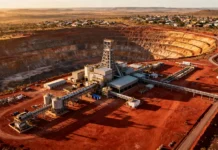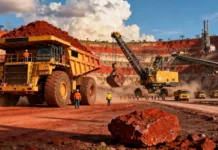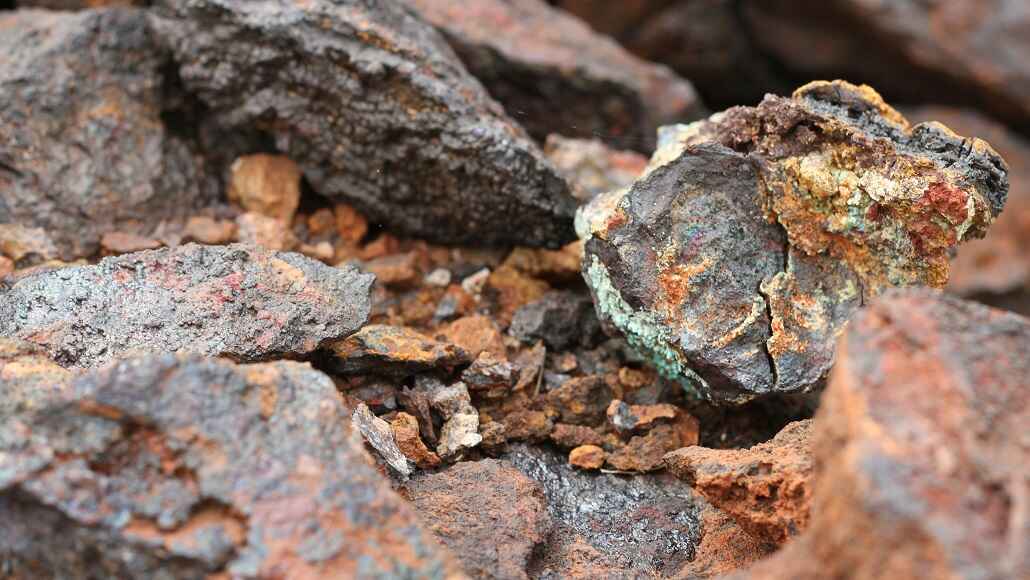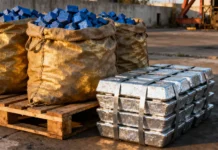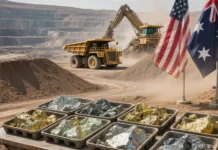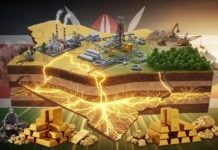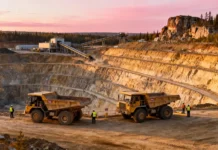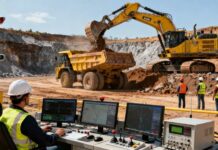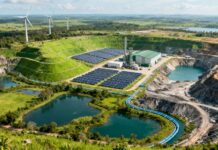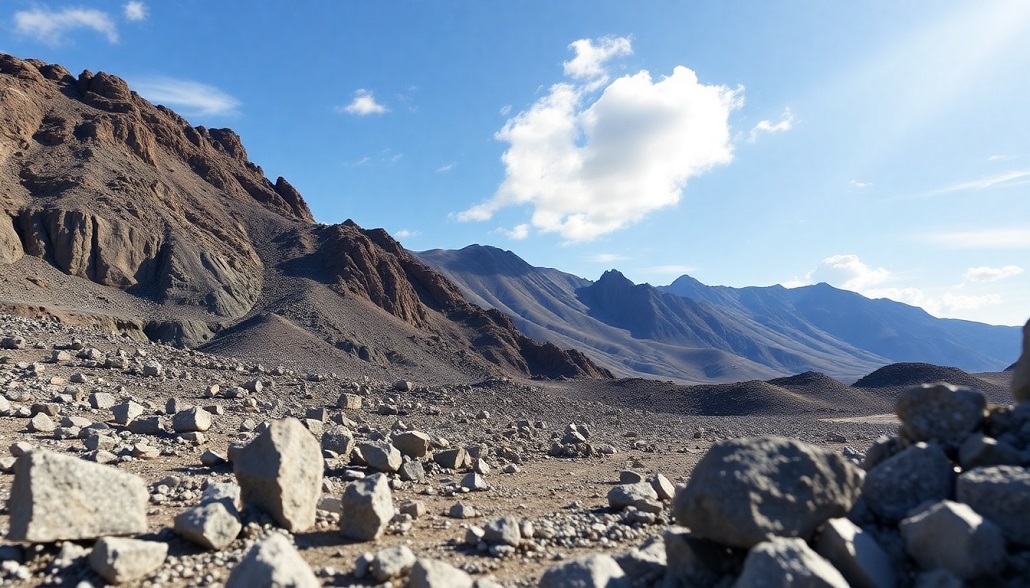So, every time you see your phone, open your computer, or probably listen to your favorite music on AirPods, you are indeed depending on critical minerals. These materials happen to be the tiny building blocks that power modern life. Right from lithium, nickel, cobalt, and graphite within batteries to gallium when it comes to telecommunication systems that enable consistent connectivity, crucial minerals go on to act as essential vitamins when it comes to modern technology – although small in volume, they are vital in order to function.
Still, the US depends majorly on imports when it comes to most critical minerals. In 2024, the US went over to import 80% of rare earth elements that it uses, which comprises 100% of calcium as well as natural graphite and 48%-86% of lithium, nickel as well as cobalt, just to name a few.
The growing global demand, high import dependence, as well as rising political tensions have all made the critical mineral supply an ever-growing national security issue and, in fact, one of the most immediate supply chain barriers of our times.
All this raises a question: could the US go ahead and mine as well as process the more critical minerals at home?
There is a lot of exploration that is being done in terms of options as well as barriers when it comes to US critical mineral production.
Critical minerals getting produced domestically – What’s stopping?
Let us take a look at earth elements.
These elements happen to be necessary for modern technology, energy systems, electric vehicles, and military applications. For instance, neodymium is a critical element for making strong magnets that are used in computer hard disks, lasers, and wind turbines.
Gadolinium, on the other hand, is a vital element for MRI machines, whereas samarium and cerium go on to play major roles when it comes to nuclear reactors as well as energy systems like solar and wind.
In spite of their name, it is worth noting that rare earth elements are actually not rare. Their concentrations when it comes to Earth’s crust are comparable to the more commonly used metals like zinc and copper.
It is well to be noted that the US at present has only two domestic mining locations, located in California and Georgia.
When it comes to Southeast Georgia, where the rare earths are produced as byproduct of heavy minerals and mining. The produced rare earth concentrates go ahead and get shipped out of state and then go abroad for refining into the materials that are used in renewable energy technologies as well as permanent magnets.
The other location happens to be California’s mountain pass, where hard rock mining goes on to extract a rare earth carbonate mineral named bastnaesite. Still, much of the material gets sent abroad for refining. Due to this, the supply chain, right from mining to final usage in products, stretches across the continents.
US critical minerals as well as primary import sources
It is well to be noted that the US depends majorly on imports for many of its critical minerals. China has been the primary import source when it comes to several of them, such as rare earths, as per the US Geological Survey, 2024.
Meeting the US demand when it comes to rare earth elements as well as other critical minerals from operations in the United States is going to require more than just opening new mines. It will need some sort of development and scaling up of new technologies along with building processing operations.
It is well to be noted that in the past, processing has largely taken place abroad because of the environmental effects, regulatory constraints, and energy demand.
There is indeed the potential, but still a long road to new mines
Investment when it comes to exploration activity as far as critical minerals happens to be rapidly growing across the US.
In 2017, the US Geological Survey went on to launch the Earth Mapping Resources Initiative, which is also known as the Earth MRI, in order to identify potential sources in terms of critical minerals within the United States.
Some of the areas that appear really promising for rare earth elements have immense chemical weathering wherein rocks that have rare earth elements are broken down by way of reacting with water and air. Exploration is indeed underway at certain sites in Wyoming as well as Montana.
However, it is well to be noted that identifying the resource is not the same as producing it.
It is worth noting that traditional mining can take a decade or two from exploration to production and up to 29 years in the US, which happens to be the second-longest timeline in the world. Although this kind of timeline can variably change under the present administration, companies might still go on to face major uncertainties that are related to permitting, development of infrastructure, and, in certain places, community opposition.
Most exploration projects which are mentioned above happen to be at an early stage and the US requires more parallel efforts that can bring the resources to the market at a much faster pace.
Mining the materials that have already been mined
One of the fastest ways to grow US rare earth production may as well not require digging new holes in the ground but rather returning to the ones that are old. The Atlantic coast region goes on to stand out when it comes to the Earth MRI map as a specially promising area. What’s even much better is that this region has already gone on to establish extensive mining performance and mature infrastructure, which enables faster speed to the market.
On the other hand, Georgia happens to have minerals and deposits that are rich in zirconium, titanium, as well as rare earth elements. Titanium as well as zirconium both happen to be used in energy and medical applications and aerospace and are already mined across Florida and Georgia. When it comes to Southeast Georgia, rare elements that are found with these heavy metals are already getting recovered as rare earth concentrates.
Kaolin, which is widely used in paper, porcelain, and paint, has been mined in Georgia for more than a century, and it can also contain rare earth elements. It is worth noting that Georgia goes on to generate over 8 million tons of kaolin every year, making it a leading US producer and also a large exporter. This also happens to come with billions of tons of mining as well as processing residue, or what is often called tailings.
The recent studies go on to suggest that there happens to be a prominent potential when it comes to extracting rare earth elements in the tailings.
The tailings are already mined as well as sitting on the surface, and hence there is no need to drill or even blast. All this goes on to mean that the existing infrastructure offers much faster timelines and lower expenditures as compared to new mining operations.
Technological innovations like bioleaching, separation and electrochemical separation, and ligand-based extraction and separation are indeed making the mining of this legacy waste more possible than ever.
There could be new processing facilities that could be built nearby the existing kaolin or heavy mineral sand operations or even former mine sites by bringing the materials to market in a few years rather than decades.
The future, when it comes to waste mining
This kind of approach is part of a wider strategy called waste mining, urban mining, or even mining the anthropogenic cycle.
It goes on to involve the recovery of critical minerals right from existing waste streams, like coal ash, mine tailings, and industrial byproducts. It also happens to be a part of building a circular economy wherein the materials are used and recycled rather than getting discarded.
It is worth noting that the US happens to have the potential to catalyze the new domestic supply chain when it comes to materials that are essential to national security and technology. Waste mining along with recycling are crucial pieces that ensure long-term sustainability of the supply chains.



